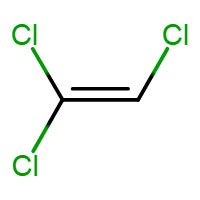TCE (Trichloroethylene)
TSCA Ten: Snapshots of the first 10 chemicals to be reviewed under the new TSCA
Date updated:
Summary: An overhaul in 2016 of the main U.S. chemical safety law, the Toxic Substances Control Act, required EPA to choose the first 10 chemicals for risk evaluation. TCE, one of the first 10 chemicals, is a chemical used in dry cleaning, cleaning wipes, adhesives, and a range of other products. EPA has classified it as a known carcinogen. It's also linked to neurological damage and birth defects.
In December 2016 and January 2017, EPA proposed two rules to ban use of TCE in aerosol degreasers, spot cleaners, and vapor degreasing. Unfortunately, the agency has abandoned finalization of these proposed bans.
Read TCE posts on the EDF Health blog
What kinds of products may use TCE?
- Stain removers (for clothes or carpet)
- Aerosol degreasers
- Cleaning wipes
- Adhesives and sealants
- Adhesive for lace wigs and hair extensions
- Lubricants
- Tap and die fluid (lubricant used for metal working)
- Paints and coatings
- Arts and crafts
- Automotive care
What hazards does TCE pose?
- Known human carcinogen
- Developmental toxicity
- Immunotoxicity
- Neurotoxicity
- Moderately persistent in the environment
Who may be exposed or most at risk?
- Workers and occupational bystanders in TCE manufacturing and processing industries or using commercial products containing TCE
- Pregnant women/developing fetus/children
- People that depend on water sources contaminated with TCE
- People that live near industrial or commercial facilities that use TCE
Production profile (2015)
- U.S. manufacture (production and import): 171,929,400 lbs
- Number of manufacturers: At least 10
- Number of manufacturing sites: 13
What industries use TCE?
- Vapor degreasing
- Refrigerant manufacturing
- Dry cleaning and laundry
- Clothing or textile treating
- Chemical manufacturing
TCE additional resources
- EPA: Preliminary information on manufacturing, processing, distribution, use, and disposal [PDF]
- EPA: Scope of risk evaluation [PDF]
- EPA: Problem formulation [PDF]
- EPA: TSCA work plan chemical risk assessment: Degreasing, spot cleaning and arts & crafts uses [PDF]
- EPA: Integrated Risk Information System chemical assessment summary[PDF]
- EDF Health: With TCE, EPA proposes first toxic chemical ban in 27 years under TSCA
- EDF Health: EPA proposes second rule to ban more uses of toxic TCE
Chemical snapshot

TCE can be found in carpet cleaners.

Credit: Chem ID Plus data base under the U.S. National Library of Medicine.










